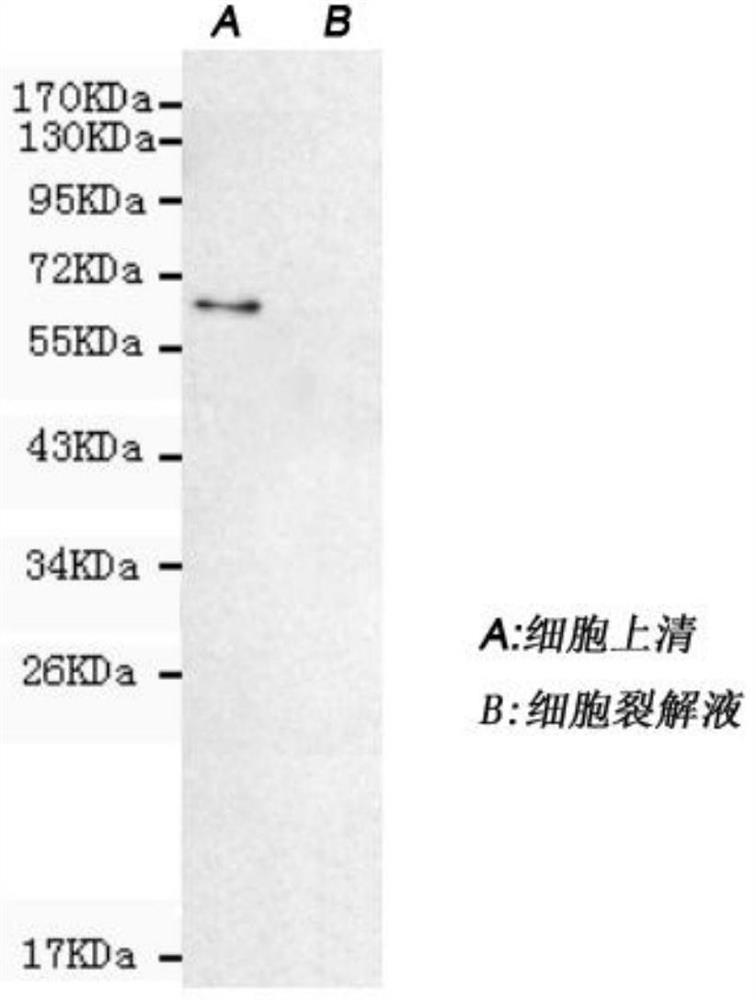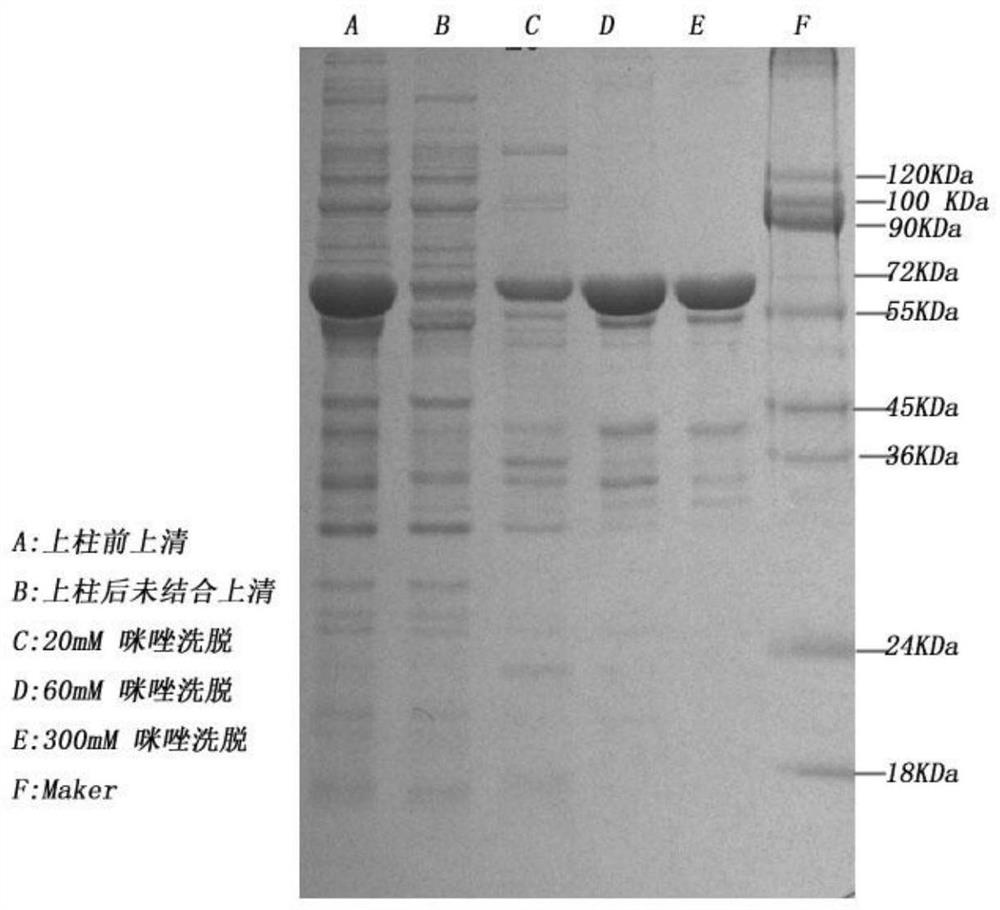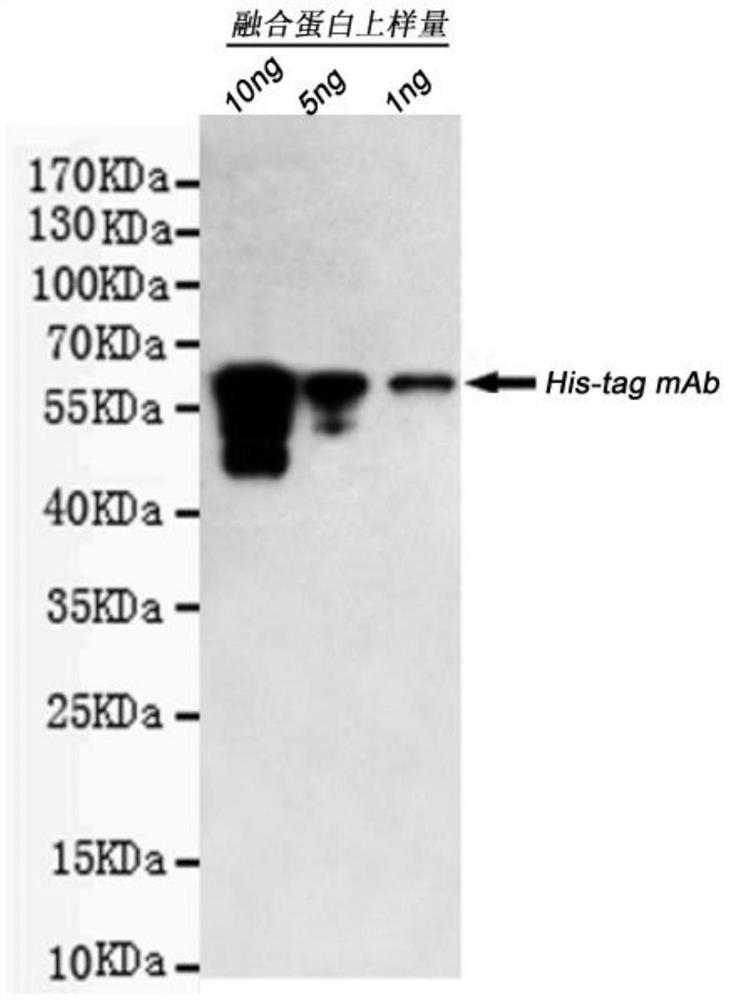PLA2R, C1q and THSD7A fusion protein and construction method and application thereof
A PLA2R, fusion protein technology, applied in DNA/RNA fragments, fusion peptides, chemical instruments and methods, etc., can solve the problems of missed detection, false detection, poor sensitivity and specificity of protein detection, and reduce missed detection and false detection. , the effect of reducing cost and time, and improving sensitivity and specificity
- Summary
- Abstract
- Description
- Claims
- Application Information
AI Technical Summary
Problems solved by technology
Method used
Image
Examples
Embodiment 1
[0042] Synthesis of fusion gene (target gene):
[0043] PLA2R protein (GeneID: 22925) sequence selection is as follows:
[0044]MLLSPSLLLLLLLGAPRGCAEGVAAALTPERLLEWQDKGIFVIQSESLKKCIQAGKSVLTLENCKQANKHMLWKWVSNHGLFNIGGSGCLGLNFSAPEQPLSLYECDSTLVSLRWRCNRKMITGPLQYSVQVAHDNTVVASRKYIHKWISYGSGGGDICEYLHKDLHTIKGNTHGMPCMFPFQYNHQWHHECTREGREDDLLWCATTSRYERDEKWGFCPDPTSAEVGCDTIWEKDLNSHICYQFNLLSSLSWSEAHSSCQMQGGTLLSITDETEENFIREHMSSKTVEVWMGLNQLDEHAGWQWSDGTPLNYLNWSPEVNFEPFVEDHCGTFSSFMPSAWRSRDCESTLPYICKKYLNHIDHEIVE。
[0045] THSD7A protein (GeneID: 221981) sequence selection is as follows:
[0046] AAQGEAEAPTLYLWKTGPWGRCMGDECGPGGIQTRAVWCAHVEGWTTLHTNCKQAERPNNQQNCFKVCDWHKELYDWRLGPWNQCQPVISKSLEKPLECIKGEEGIQVREIACIQKDKDIPAEDIICEYFEPKPLLEQACLIPCQ.
[0047] The C1q protein sequence (GeneID:712) is selected as follows:
[0048] GRPGRRGRPGLKG.
[0049] S1. Connect PLA2R, THSD7A, and C1q nucleotide sequences in sequence to obtain the target gene, and repeat C1q three times. Among them, a Linker sequence is ...
Embodiment 2
[0052] Construction of recombinant plasmids containing fusion genes:
[0053] 2.1 The PCR fragment obtained in Example 1 is connected with the carrier pcDNA3.1(+ / -)A (plasmid) through restriction endonuclease BamH I and Not I double digestion to obtain a recombinant plasmid;
[0054] 2.2 Transform the ligation product (recombinant plasmid) into competent Escherichia coli DH5α. The volume should not exceed 10% of the competent cells. Gently swirl the contents several times to mix the contents. Place the tube in a 42°C water bath for 30 minutes. Timed heat shock for 60 seconds, quickly transfer the tube to an ice bath for 120 seconds to cool the cells, add 400 μL LB medium to each tube, and shake slowly at 37°C for 60 minutes to revive the bacteria and express the antibiotic resistance marker gene encoded by the plasmid, at low speed Centrifuge for 2 minutes, remove the supernatant, leave about 100 μL of medium in the centrifuge tube, resuspend the bacteria, and spread the bacte...
Embodiment 3
[0057] Expression of fusion protein
[0058] 3.1 Transform the recombinant plasmid obtained in Example 2 into DH10 Bac E.coli competent cells, the volume should not exceed 5% of the competent cells, and gently rotate several times to mix the contents;
[0059] 3.2 Ice bath for 30 minutes; put the tube in a 42°C water bath, and heat shock for 90 seconds at regular intervals; quickly transfer the tube to the ice bath for 120 seconds to cool the cells; add 800 μL LB medium to each tube, and shake slowly for 4 hours at 37°C. Resuscitate the bacteria and express the antibiotic marker gene encoded by the plasmid; spread 30 μL of the bacterial solution on the resistance agar plate with a glass spreader; place the plate upside down in a constant temperature incubator at 37°C, blue and white spots will appear after 30-48 hours Colony;
[0060] 3.3 Pick a single positive white spot colony and inoculate 5mL of resistant LB, shake slowly for 12-16h, take the bacterial solution for PCR id...
PUM
 Login to View More
Login to View More Abstract
Description
Claims
Application Information
 Login to View More
Login to View More - R&D
- Intellectual Property
- Life Sciences
- Materials
- Tech Scout
- Unparalleled Data Quality
- Higher Quality Content
- 60% Fewer Hallucinations
Browse by: Latest US Patents, China's latest patents, Technical Efficacy Thesaurus, Application Domain, Technology Topic, Popular Technical Reports.
© 2025 PatSnap. All rights reserved.Legal|Privacy policy|Modern Slavery Act Transparency Statement|Sitemap|About US| Contact US: help@patsnap.com



